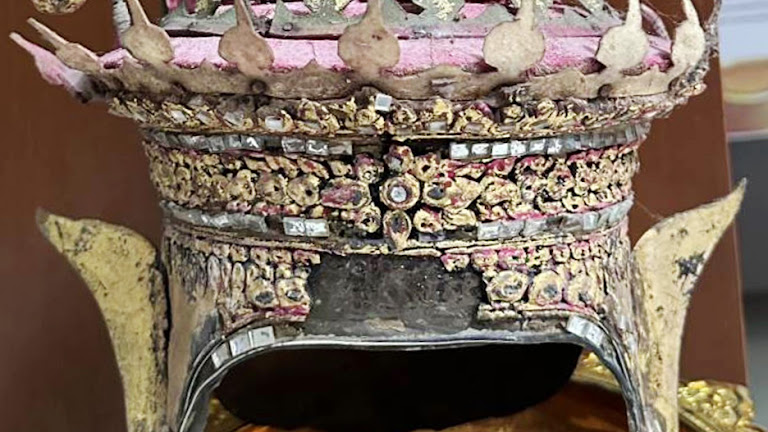Thailand’s Headdress Theft Reveals Global Heritage Security Failings
Stolen headdress and sword highlight security failings, while revealing a global struggle between cultural preservation and the illicit antiquities market.

The theft of a 200-year-old Terid Nora headdress from the Arts and Culture Center at Nakhon Si Thammarat Rajabhat University in Thailand is more than just a local crime; it’s a symptom of a global challenge in preserving and valuing cultural heritage. As detailed in these recent findings, the headdress, a crucial artifact connected to the traditional Nora dance, has vanished, along with an antique sword, leaving behind a ceremonial tray and Nora tail costume. This isn’t an isolated incident. The university suffered a similar blow five years ago when hundreds of ancient manuscripts were stolen, suggesting systemic vulnerabilities that need addressing.
The deeper problem here isn’t simply security; it’s the complex calculus of preservation versus accessibility, value placed on heritage versus economic incentives. A few considerations come to mind:
- The Intangible Value of Tangible Objects: While the headdress is a physical object, its true worth lies in its connection to Thailand’s cultural narrative. It represents centuries of tradition, artistry, and communal identity. The theft severs a link to the past and diminishes the ability of future generations to understand their heritage.
- The Economics of Cultural Heritage: Stolen artifacts rarely disappear into thin air. They enter a shadowy market driven by collectors, dealers, and individuals who often prioritize monetary value over historical significance. This illicit trade fuels further thefts and undermines efforts to protect cultural property.
- The Role of Institutions: Universities, museums, and cultural centers serve as guardians of history. When they fail to safeguard their collections, it erodes public trust and raises questions about their commitment to preservation. In this case, the university president’s acknowledgement that he only learned of the theft several days after it occurred highlights potential internal communication and oversight deficiencies.
It’s tempting to see this as simply a local law enforcement problem. But that would be a mistake. Consider the economics involved, the motivations of collectors, the ease with which cultural items can be smuggled across borders—this quickly becomes an international challenge.
The theft of the Terid Nora headdress underscores a fundamental tension: how can we simultaneously make cultural artifacts accessible for education and appreciation while ensuring their protection from those who would exploit them for profit or personal gain? The answer lies not just in better security measures, but in fostering a deeper cultural understanding and appreciation that extends beyond national borders.
The fact that this theft mirrors a previous incident involving stolen manuscripts suggests a potential internal element. Was it an inside job, as with the earlier manuscripts? And if so, what kind of systemic incentives or lack of oversight allowed this to happen again? It’s easy to focus on the individual thieves, but the true story is often buried in the systems that enable such crimes to occur. Without a thorough and transparent investigation, and significant investment in improved security and oversight, Nakhon Si Thammarat Rajabhat University, and institutions like it, risk becoming unwilling accomplices in the erosion of cultural heritage.









